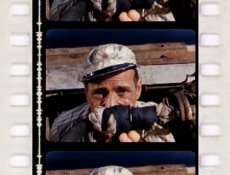Reverse Engineering of Technicolor CMY Dyes and The Mordant from Film Cut
I started to search for obtaining Technicolor cut Movie Print or Slides for to analysis the cyan magenta yellow dyes and the mordant. I am pretty serious about that.
Photo Engineer , Do spectrum analysis reveal the dye chemicals or Do they need to do another test I dont know ?
And Do spectrum software have 1970 or earlier chemical spectrum signatures in its database ? University is near to me and they have lots of labs and I am in contact with ebay seller to send me 130 technicolor slides from an old technicolor technician but they are casted.
I will look for a good looking slide or movie cut from classifieds , if you know a source , please come in.
As I posted below , I worked years at printing press industry and never saw such a cmy colors. I love it and the skin tones , they give.
Thank you for reading,
Umut
I started to search for obtaining Technicolor cut Movie Print or Slides for to analysis the cyan magenta yellow dyes and the mordant. I am pretty serious about that.
Photo Engineer , Do spectrum analysis reveal the dye chemicals or Do they need to do another test I dont know ?
And Do spectrum software have 1970 or earlier chemical spectrum signatures in its database ? University is near to me and they have lots of labs and I am in contact with ebay seller to send me 130 technicolor slides from an old technicolor technician but they are casted.
I will look for a good looking slide or movie cut from classifieds , if you know a source , please come in.
As I posted below , I worked years at printing press industry and never saw such a cmy colors. I love it and the skin tones , they give.
Thank you for reading,
Umut
Attachments
Last edited by a moderator:






